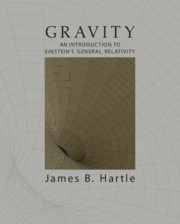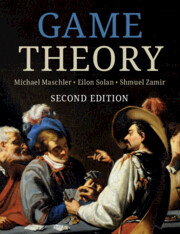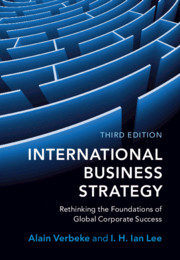Refine search
Actions for selected content:
36809 results in Cambridge Textbooks

Gravity
- An Introduction to Einstein's General Relativity
-
- Published online:
- 03 September 2021
- Print publication:
- 24 June 2021
-
- Textbook
- Export citation

Game Theory
-
- Published online:
- 03 September 2021
- Print publication:
- 25 June 2020
-
- Textbook
- Export citation

International Business Strategy
- Rethinking the Foundations of Global Corporate Success
-
- Published online:
- 02 September 2021
- Print publication:
- 23 September 2021
-
- Textbook
- Export citation

International Business
-
- Published online:
- 26 August 2021
- Print publication:
- 16 September 2021
-
- Textbook
- Export citation
References
-
- Book:
- Introducing Morphology
- Published online:
- 18 October 2021
- Print publication:
- 26 August 2021, pp 265-272
-
- Chapter
- Export citation
Index
-
- Book:
- Introducing Morphology
- Published online:
- 18 October 2021
- Print publication:
- 26 August 2021, pp 273-278
-
- Chapter
- Export citation
11 - Fundamentals of Climate Change Policy
-
- Book:
- Introduction to Modern Climate Change
- Published online:
- 19 August 2021
- Print publication:
- 26 August 2021, pp 187-204
-
- Chapter
- Export citation
4 - A Simple Climate Model
-
- Book:
- Introduction to Modern Climate Change
- Published online:
- 19 August 2021
- Print publication:
- 26 August 2021, pp 53-68
-
- Chapter
- Export citation
Copyright page
-
- Book:
- Introduction to Modern Climate Change
- Published online:
- 19 August 2021
- Print publication:
- 26 August 2021, pp vi-vi
-
- Chapter
- Export citation
7 - Why Is the Climate Changing?
-
- Book:
- Introduction to Modern Climate Change
- Published online:
- 19 August 2021
- Print publication:
- 26 August 2021, pp 112-128
-
- Chapter
- Export citation
Chapter 5 - Lexeme Formation: Further Afield
-
- Book:
- Introducing Morphology
- Published online:
- 18 October 2021
- Print publication:
- 26 August 2021, pp 87-104
-
- Chapter
- Export citation
Frontmatter
-
- Book:
- Introducing Morphology
- Published online:
- 18 October 2021
- Print publication:
- 26 August 2021, pp i-iv
-
- Chapter
- Export citation
Further Reading
-
- Book:
- Introducing Morphology
- Published online:
- 18 October 2021
- Print publication:
- 26 August 2021, pp 249-250
-
- Chapter
- Export citation
Frontmatter
-
- Book:
- Dispute Management
- Published online:
- 19 August 2021
- Print publication:
- 26 August 2021, pp i-iv
-
- Chapter
- Export citation
13 - A Brief History of Climate Science and Politics
-
- Book:
- Introduction to Modern Climate Change
- Published online:
- 19 August 2021
- Print publication:
- 26 August 2021, pp 221-242
-
- Chapter
- Export citation
Acknowledgments
-
- Book:
- Introduction to Modern Climate Change
- Published online:
- 19 August 2021
- Print publication:
- 26 August 2021, pp xviii-xviii
-
- Chapter
- Export citation
Chapter 2 - Words, Dictionaries, and the Mental Lexicon
-
- Book:
- Introducing Morphology
- Published online:
- 18 October 2021
- Print publication:
- 26 August 2021, pp 11-34
-
- Chapter
- Export citation
4 - Interviewing
-
- Book:
- Dispute Management
- Published online:
- 19 August 2021
- Print publication:
- 26 August 2021, pp 105-135
-
- Chapter
- Export citation
Reviews
-
- Book:
- Introduction to Modern Climate Change
- Published online:
- 19 August 2021
- Print publication:
- 26 August 2021, pp ii-iv
-
- Chapter
- Export citation
8 - Conciliation
-
- Book:
- Dispute Management
- Published online:
- 19 August 2021
- Print publication:
- 26 August 2021, pp 254-273
-
- Chapter
- Export citation
